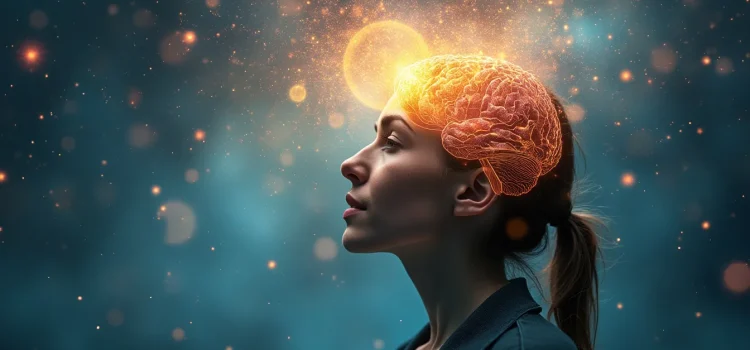

This article is an excerpt from the Shortform book guide to "Awe" by Dacher Keltner. Shortform has the world's best summaries and analyses of books you should be reading.
Like this article? Sign up for a free trial here.
What happens in your brain when you experience a moment of pure wonder? How can feeling awe actually bring people closer together?
Psychology researcher Dacher Keltner discusses the science of awe in his book Awe: The New Science of Everyday Wonder and How It Can Transform Your Life. He explains that awe-inspiring experiences can reduce self-centered thinking and activate powerful group bonding mechanisms in our brains.
Keep reading to discover how moments of wonder can transform both your mind and your relationships with others.
The Science of Awe
According to Keltner, the key effect of awe is the diminishing of the self. He cites numerous examples involving spiritual teachers, natural wonders, and psychedelic experiences in which people describe their egos dissolving as they connected with something greater. This phenomenon of the “vanishing self” isn’t an illusion—Keltner’s research demonstrates that people experiencing awe really do think in less individualistic terms. Keltner lays out the science of awe, explaining how awe suppresses self-centered thinking while triggering physiological reactions that promote group-centered behavior.
(Shortform note: Keltner describes a fading sense of self as a byproduct of experiencing awe, but in Waking Up, philosopher Sam Harris points out that some spiritual practices—most notably within the Buddhist and Hindu traditions—assert that your sense of self is an illusion, and that only your experience of consciousness is “real.” Harris argues that making this realization is the whole point of the spiritual experience, and while Keltner’s quest for awe may certainly be one path to get there, Harris presents various meditation practices as a more practical approach to achieving a less self-oriented outlook on life and the world.)
Keltner’s research indicates that experiencing awe reduces activity in the region of the brain called the “default mode network” or DMN, which is associated with self-referential thinking—the rumination, planning, and daydreaming we do when our attention isn’t focused on external stimuli. Neurologically, the DMN creates your sense of being a separate individual as well as your desire to stand out from others. While a strong self-concept is key to personal achievement, not to mention your innate drive to survive, being stuck in your brain’s default mode for too long can lead to anxiety and depression. Keltner says that awe silences this aspect of the self, potentially offering relief from these negative states.
(Shortform note: While Keltner discusses the detrimental aspects of the brain’s DMN, it serves a vital function in human cognition. In A Mind for Numbers, Barbara Oakley draws a connection between the DMN and the mind’s resting state, in which we perform “diffuse-mode thinking”—in other words, relaxing your focus and letting your mind wander. In this mode, the DMN subconsciously processes information while allowing you to step back and see the big picture. Therefore, while experiencing awe gives you a break from inner rumination, Oakley explains that solving difficult problems requires letting your DMN do its job.)
If awe suppresses the brain’s default mode, then what does it trigger in its place? According to Keltner, studies on people taking in awe-inspiring art or music show that awe stimulates several key areas of the brain, beginning with the neural regions that process sounds, shapes, and colors. From there, neurochemical signals activate the brain’s higher functions, engaging pattern recognition and conceptual understanding. This allows us to not only see and hear wonder-inspiring moments but also to assign meaning to them. Thus, what began as nerve signals from our eyes and ears gets filtered through—and reshapes—the cultural contexts and personal experiences stored in our minds.
For example, touring St. Peter’s Basilica in Rome is awe-inspiring even for the nonreligious, thanks to the scale of its architecture and the intricate artistry on display. If you were to later visit the Hassan II Mosque in Casablanca, you might experience a similar state of awe through a completely different cultural lens. The personal context you bring to each visit shapes your perception of the experience, but the awe you feel in each encounter adds to the context you take with you going forward. Through awe, perception and context shape each other.
| How New Experiences Rewire the Brain Though Keltner describes how awe interacts with both sensory perception and your mind’s higher functions, he doesn’t dwell on the physical mechanisms awe catalyzes inside your brain. The key to awe may lie in the conflict between what your brain expects, what it actually perceives, and how it resolves the two. In A Thousand Brains, neuroscientist Jeff Hawkins explains that to interpret and act on information from your senses, your brain creates mental models of your environment, uses them to continuously make predictions, and compares those predictions to your sensory input. Every time you shift your gaze or step into a room, your brain unconsciously predicts what it expects to perceive. If nothing’s unexpected, you don’t notice anything, but surprises—such as awe-inspiring vistas your brain couldn’t possibly anticipate—draw your attention and trigger your mind to update its models. This cycle of prediction, feedback, and adjustment is the neurological basis of learning—one that moments of awe can kick into high gear. In the previous example of St. Peter’s Basilica and the Hassan II Mosque, your brain’s expectations are determined by personal and cultural experience. Nevertheless, the basilica’s sweeping Renaissance architecture or the mosque’s merger of traditional Islamic and modern design, not to mention the sheer scale of both buildings, may upend your brain’s unconscious expectations. This would force your brain to reconfigure its models and leave your conscious mind in a heightened transitional state that we interpret as the emotion “awe.” |
Awe Brings Us Together
Perhaps even more significant is that, when people experience awe as a group, their brains mirror each other in how they process language and emotion. Keltner traces this to the way awe expresses itself in the body. We get goosebumps, which Keltner proposes have evolutionary roots in the way mammals huddle to keep away the cold. We also produce vocalizations like “wow,” which research shows are recognized across cultures. Keltner suggests that these expressions predate language and served as a way for early humans to communicate and unite against the dangers of an unknowable world. Therefore, on a biological level, awe triggers mechanisms for humans to bond and create communities for survival.
| The Neuroscience of Togetherness Neuroscientists attribute the phenomenon Keltner describes regarding how people’s brains sync up to mirror neurons—nerve cells that respond to other people’s behavior, model their actions, and extrapolate the intent behind what other people do. In The Whole-Brain Child, Daniel J. Siegel and Tina Payne Bryson credit mirror neurons with integrating a child’s sense of self with their family and community, perhaps providing the neurological basis for empathy and compassion. Even as adults, mirror neurons let us resonate with others’ emotions, forming the bedrock of social bonding through shared awe-inspiring—as well as negative—experiences. However, Keltner’s link between vocalizing awe and our ancestors’ first communications may understate the complexity behind the origins of language. In The Language Instinct, Steven Pinker argues that language is largely a genetic adaptation that arose through natural selection to give our species an evolutionary edge. Pinker suggests that the most significant commonality between languages isn’t the sound of words—such as wow—but the fact that certain grammatical components are shared between all modes of human speech. In Pinker’s view, language evolved as a means to persuade others and convey information, with the expression of emotions such as awe as a side benefit. |

———End of Preview———
Like what you just read? Read the rest of the world's best book summary and analysis of Dacher Keltner's "Awe" at Shortform.
Here's what you'll find in our full Awe summary:
- The positive effects of experiencing awe-inspiring moments
- How the arts can help you nurture awe
- How awe brings us together as human beings






